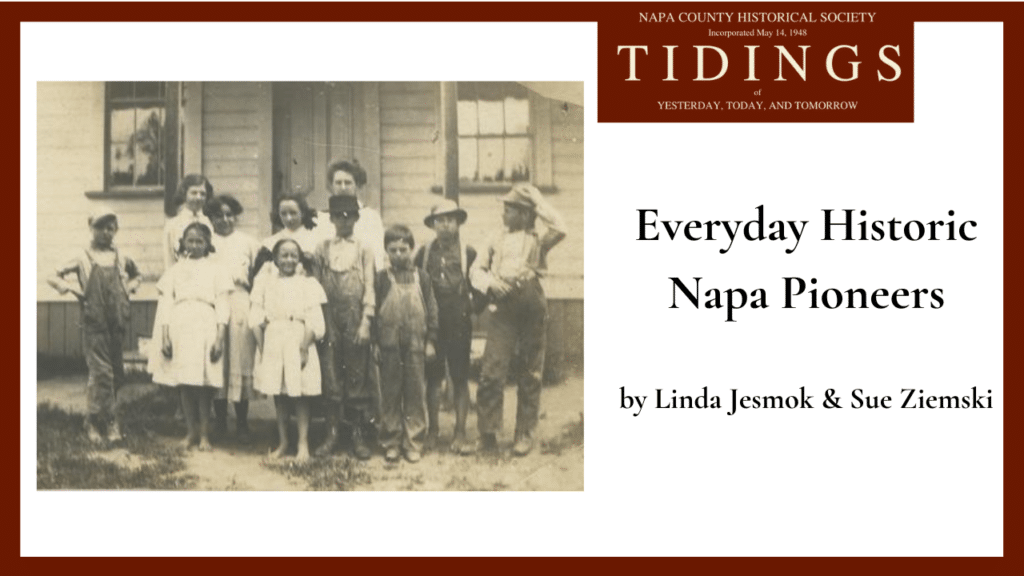California History, Exhibit, General History, People, Tidings, Uncategorized
Everyday Historic Napa Pioneers
By Sue Ziemski and Linda Jesmok.
As a partner for the new exhibit, City of Immigrants: An American Story, the Napa Valley Genealogical Society dove into our Napa Pioneer records to build stories around four individuals who lived in the Valley between the 1830s and 1920s. One of our goals was to choose a variety of everyday people who represent the diversity of the Valley but are different from the historical individuals usually covered in the histories of the area. We searched through governmental records, photographs, and newspapers building out chronicles of facts from birth to death. Without a doubt, the information we assembled is uneven. Although we found photos of all three men there is no known photo of Araminta McComb Sawyer. The US Census records are only as good as the individual census takers, so sometimes families or individuals are left out, or incomplete or inaccurate information is recorded. Our assembled information was taken by the Historical Society Exhibit Committee and translated into a visual exhibit for each person. In this blog we are using the data we found to expand on the facts and tell the story of these historic pioneers as well as the challenges in researching them.
Joseph Chenette (1825-1904)
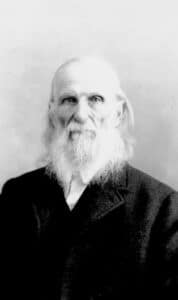
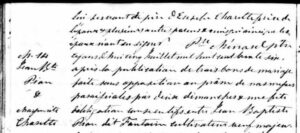
In April of 1871, Joseph married Louisa Virginia Bullock McLin, a twenty-year-old widow with a small, three-year-old daughter, Viola McLin. The Chenetes had two children, Charles born in 1873 and Carrie born in 1876. They were living in Hillsborough, Oregon, when The Morning Oregonian (28 May 1878) noted that Joseph had secured a patent for his “Extension shoe last.”
That same summer the Chenettes welcomed a son, Franklin. Sadly, Franklin only lasted a couple of months, perishing in late September. The loss of their son appears to have spurred the Chenettes to move. By 1880 they were living on Vallejo Street in Napa and Joseph had set up his shoemaking shop. He was 55 years old. It is unclear whether Joseph came south first and established his business before bringing his family south. Oregon birth records reveal Louisa gave birth to a daughter Ethel (nicknamed Etta) in April 1878 in Oregon. However, Etta was in Napa in time for the 1880 federal census as were the other Chenette children Viola, Charles, and Carrie. By 1880, Joseph’s oldest son Joseph Ezekiel is not living with the family. The following year Louisa gave birth to another daughter, Nany. Like her older brother Franklin, Nany only survived a month. As the Chenettes settled into Napa, Louisa gave birth to three more children: Emma Lou or “Dolly” (Oct 1882), George Henry (Mar 1884), and Joseph C (Sept 1886). Joseph C only survived a month, dying in October the same year.
In 1887, Joseph traveled south to San Diego to help Frank Wright of Wright & Co. set up a shoe company. His return in September of 1887 is noted in the Napa Register, where Joseph reported Frank was doing well (8 Sept 1887). Upon his return, the Chenettes took out a loan from local Napa businessman Bartolomeo Semorile. We know about the loan because, after a series of tragedies including the death of Louisa at age 37 (Oct 1888) and a boating accident on San Francisco Bay that claimed 16-year-old son Charles (Sep 1889), Joseph appears to have gone into a deep depression, throwing himself into building a 20 ft x 23 ft. diorama of the City of Babylon for the Chicago World Fair (Napa Register 27 Oct 1890). The model was rejected and the income Joseph hoped to garner from the exhibition evaporated leaving him in debt to B. Semorile who sued for repayment in 1891 (Napa Register 24 Oct 1891). The courts found in Semorile’s favor and Chenette and his children were ordered to pay $308.55 (Napa Register 19 Feb 1892).
That year Joseph was recognized by the Parisian Inventors Academy for his invention of the self-threading sewing machine (Napa Register 16 Sep 1892), which it appears he had been out promoting when robbed in Fall River, Massachusetts (San Francisco Examiner 8 Nov 1892). Through the Napa Voting Registers, we know that Joseph returned to Napa and continued to vote throughout the 1890s. In the US federal census of 1900 Joseph, 75, is still living at 11 Vallejo Street in Napa with daughters Carrie (age 24) and Dolly (age 18), and a granddaughter. Son George (age 16), who followed in his father’s footsteps and became a shoemaker, is working alongside Joseph at their shop.
When Joseph Chenette died in 1904 at the age of 79, the Napa Register hailed him as both an architect and engineer, as well as a noted shoemaker. (6 Sep 1904). Joseph was survived by his oldest son Joseph E who stayed in Oregon (1860-1918), his daughters Carrie (1876-1961), Etta (1879-1968), and Dolly (1882-1943), as well as his younger son George (1884-1966). Joseph had 14 grandchildren.
Araminta Henriette Blake McComb Sawyer (1842-1882)

Araminta was the fifth child in the Blake family of seven. She was born in Indiana on March 5th 1842. In the US federal census of 1850, Araminta’s 48-year-old mother, Anna, was a widow with children ages twenty-eight to four helping her farm. Within four to five years Araminta and her brother Aaron set out for California and arrived in the Napa Valley. Aaron went to work for the McComb family and is listed as part of Issac’s household in the US federal census of 1860.
The McCombs had immigrated from Indiana to Napa in 1848 as part of the James Clyman wagon train. Lambert (age 58) and his wife Hannah (age 61) brought their seven grown children with them, their sons-in-law, and grandchildren. Their daughter Rebecca (age 22) was married to Stephen Broadhurst and their daughter Martha (age 32) was married to Joshua Hardman. The combined families all settled in Napa. By the 1852 California Economic Census, Lambert had died leaving Hannah and her sons Issac (age 26), Jacob (age 25), Joseph (age 21), and Ben (age 21) to run the ranch.
It is possible that the McCombs knew the Blakes before coming to California. At fourteen, Araminta married Issac McComb in 1856. The federal census of 1860 finds Issac and Araminta ranching in the Putah Creek area. They owned 500 acres and had two daughters, Martha (age 4) and Anne (age 1). A decade later, Hannah McComb, then 81, is living with Isaac and Araminta along with their children Martha (age 13), William (age 8), Elizabeth (age 5), and Hannah R (age 3). At some point in the 1860s, little Anne died. According to the 1860 census Araminta’s older brother Andrew, his wife, and six children were living next door, while Issac’s sister Martha and her husband Stephen Broadhurst lived next door to the Blakes.
Whether it was her mother-in-law moving in with them or a combination of things, Araminta divorced Isaac in 1870 and married John Earl Sawyer within a year.
During her marriage to John Earl, Araminta gave birth to her final child, Emelia born in 1877. She had taken with her Elizabeth and Hannah when she left Isaac McComb. In the 1880 census, Araminta used her middle name Henriette, and referred to young Hannah as Ruth.
Araminta died in 1882 of consumption at age 40. There are no surviving photos of her or documents other than census, marriage and gravesite data, yet Araminta led a full life and left behind family and friends. Araminta was survived by her daughters Martha McCombs Roney (1856-1919), Elizabeth McCombs Bartow (1865-1939), and Ruth McCombs Grigsby (1868-1951), as well as her son William McComb (1861-1934). The whereabouts of her youngest daughter Emelia are unknown.
Enos Anthony Valencia (1860-1946)
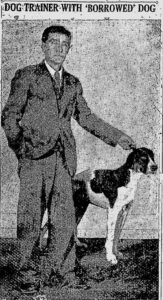
The following year, Enos married Carlotta Hernandez (28 December 1883). In 1886 they welcomed their first child. Sadly, the baby only survived two years, passing away April 13, 1888. Six months later Carlotta gave birth to their daughter Caroline (October 1888). Unfortunately, the marriage did not last and Carlotta divorced Enos in 1891 (3 March 1891). Caroline left with Carlotta.
That same year 31-year-old Enos married 23-year-old Flora Rojas at Yount’s ranch. Flora’s mother had worked on the ranch decades before. Flora and Enos welcomed three children over the following decade, Joseph (10 February 1892), Evelina (March 1897, and George Enos (1 August 1898). By 1900 Enos and his family had moved to Crockett and he was working at the Spreckel’s C&H Sugar Refinery as a “Sack Sewer.” In 1901 their third son, Carlos was born (11 August 1901). It appears they stayed another year in Crockett revealed by the death of their five-year-old daughter Evelina (March 1902).
The following year the Valencia’s moved back to Napa and an advertisement in the 1903 Napa Register has Flora selling tamales from her home kitchen. The Napa Journal noted in March 1906 that Enos Valencia bought land in the newly developed “alphabet” streets (25 March 1906). During this period, Enos’ mother Joaquina Valencia moved in with the family. In the 1910 US federal census, Enos is listed as a “hunting dog trainer” and “laborer.” They had just welcomed their fourth son, Archibald (March 1910). Sadly, like his sister, Archibald only lived five years. During this last decade of mass historic immigration into Napa Valley, Enos’ mother Joaquina also passed away, possibly from influenza. Her obituary appeared in the Napa Journal (30 November 1918). Their oldest son Joseph participated in World War I and his letters home from the airbase outside of London where he was stationed were noted in the Napa Journal (3 January 1919).
Enos would go on living another 26 years. He survived his wife Flora who died in 1926 (Napa Journal 17 October 1926) but stayed at their B Street home until he died in 1946 (18 January 1946).
Levi Asa Chapman (1849-1938)
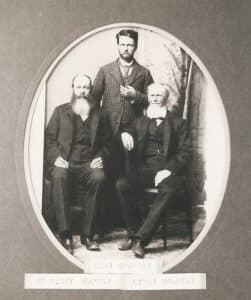
Five years later, they bought a house in town on Randolph and 4th (Napa Register 24 April 1885). In the late 1880s, Levi was working for Horstmeyer’s as a clerk, but within a decade the City Directory notes that Levi owns a grocery store on the Southeast corner of First and Brown streets. Throughout the rest of his working life, Levi maintained the grocery store. Pauline and Levi had six children and all but one lived to adulthood. Their oldest son William was born in 1877, followed by Anna in 1881, Paul in 1883, Lydia in 1885, Bertha in 1888, and Ruth in 1899. Sadly, Ruth died when she was only seven years old.
Although this appears to be a straightforward tale, Levi is often confused with his older brother Solon and his cousin Asa. Solon left farming and went to work for Chancellor Hartson at the Bank of Napa. Eventually, he became the President of the bank. Cousin Asa built a fine home on the family ranch in the Carneros. However, histories often attribute the bank presidency to Levi as well as the grand home captured in the lithograph by Smith & Elliot’s Illustrations of Napa County.
Although the information we were able to assemble for these four historic Napa pioneers is never complete, we were able to use the documents available online and in local archives to build out their lives, catch glimpses of their trials and successes, and gain a perspective of early historic Napa Valley. These four individuals saw great changes in Napa Valley through the course of their lives, experiencing mass immigration in the Valley that dramatically transformed the region. They witnessed the transfer of governance from the First People to Mexico, then to the United States, and they contributed to everyday life.
The Napa Valley Genealogical Society (NVGS) holds a large collection of information regarding early historic settlers in Napa Valley. NVGS is dedicated to the promotion of genealogical, historical, and biographical research, and the preservation of historic family histories.


